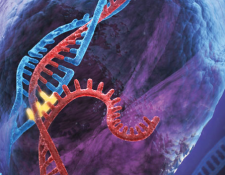CRISPR causes serious DNA damage with high frequency – but it’s often overlooked
By Claire Robinson,
GMWatch
| 08. 09. 2023
The latest in a long series of papers has been published, detailing unintended effects of CRISPR gene editing. The new review summarises the many types of serious unintended on-target (at the intended edit site) DNA damage resulting from CRISPR/Cas gene editing.
The review appears as the European Commission and the UK government maintain their pretence that gene editing is a precise, predictable, and controllable technique and that food plants made with this technology are therefore as safe as those produced by conventional breeding.
The authors of the new paper, from Rice University in the US, reviewed the literature on CRISPR gene editing in human, primate, and mouse cells. They found that CRISPR-induced double-strand breaks in the DNA caused numerous large unintended on-target genetic damages, including large and small deletions and insertions, and chromosomal rearrangements of genetic material. And they note that even large on-target gene modifications are not detectable by standard methods.
Because the unintended effects of CRISPR gene editing highlighted in the new review are on-target mutations at the intended edit site, improving the targeting of the editing tool...
Related Articles
By Aisha Down, The Guardian | 11.10.2025
It has been an excellent year for neurotech, if you ignore the people funding it. In August, a tiny brain implant successfully decoded the inner speech of paralysis patients. In October, an eye implant restored sight to patients who had...
By Jessica Hamzelou, MIT Technology Review | 11.07.2025
This week, we heard that Tom Brady had his dog cloned. The former quarterback revealed that his Junie is actually a clone of Lua, a pit bull mix that died in 2023.
Brady’s announcement follows those of celebrities like Paris...
By Heidi Ledford, Nature | 10.31.2025
Late last year, dozens of researchers spanning thousands of miles banded together in a race to save one baby boy’s life. The result was a world first: a cutting-edge gene-editing therapy fashioned for a single person, and produced in...
By Lauran Neergaard, AP News | 11.03.2025
WASHINGTON (AP) — The first clinical trial is getting underway to see if transplanting pig kidneys into people might really save lives.
United Therapeutics, a producer of gene-edited pig kidneys, announced Monday that the study’s initial transplant was performed successfully...




